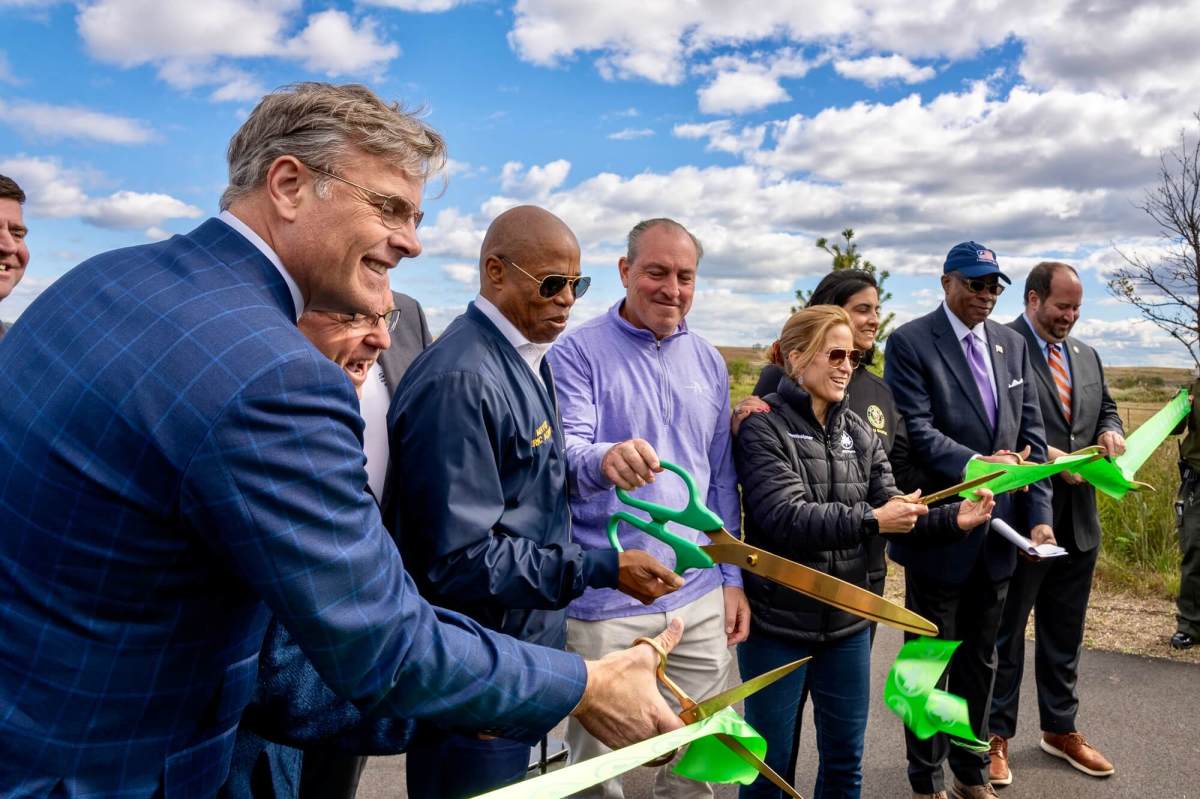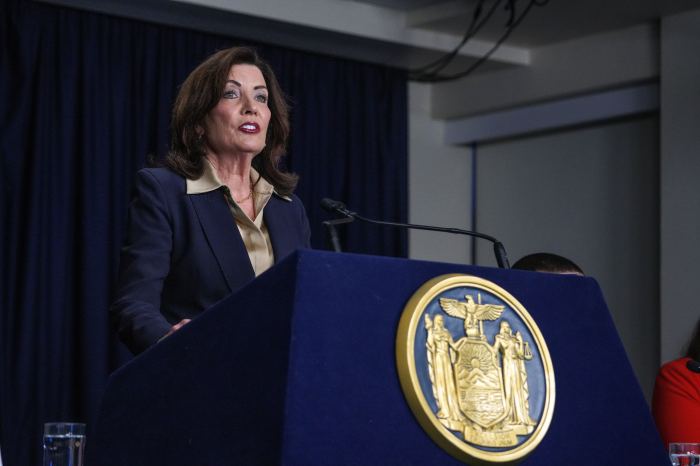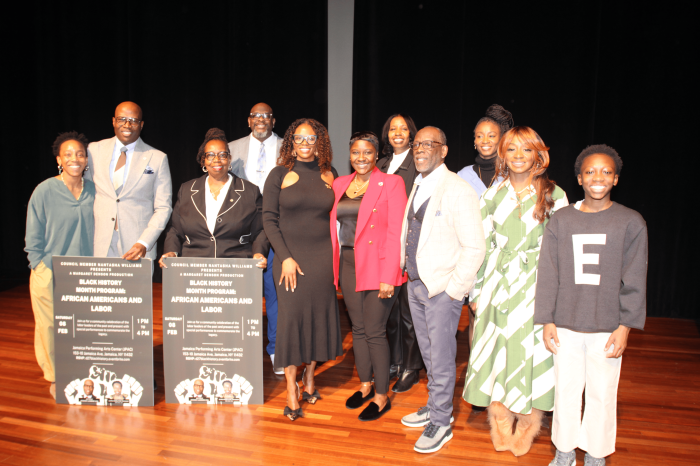Mayor Eric Adams joined a slew of elected officials on Staten Island on Oct. 15 for the ribbon-cutting ceremony of the North Park section of Freshkills Park, the dumping ground for New Yorker’s residential garbage from 1948-2001.
A bi-partisan effort turned the space — once the largest landfill in the world, visible from space — into 2,200 acres of urban parkland, making it three times larger than Central Park and the largest park to be developed in New York City in over 100 years.
Freshkills Park is being built in phases, transforming the landfill into reclaimed wetlands, recreational facilities, and landscaped public parkland. North Park is the first part to open to the public.
The 21-acre section is home to local plants and includes pedestrian and cycling paths, a bike repair station, a picnic area, athletic courts, and playgrounds. It has become a sanctuary for wildlife like ospreys, hawks, and terrapins, and bird enthusiasts can observe the critters from two brand-new viewing platforms. Park visitors also have access to the Williams T. Davis Wildlife Refuge.
Restroom waste is turned into compost, feeding the soil, and solar panels provide electricity for the restrooms and parking lot lights.
Mayor Eric Adams said that for far too long, Staten Island has been the “forgotten borough,” pointing out that he had spent more time in Staten Island in his 21 months in office than any of his predecessors.
“This is the bedrock of working-class people, and they should have the same level of services that the entire city deserves,” Adams said. “We all remember Fresh Kills. [There] was nothing fresh about the smell that came out here. It killed.”
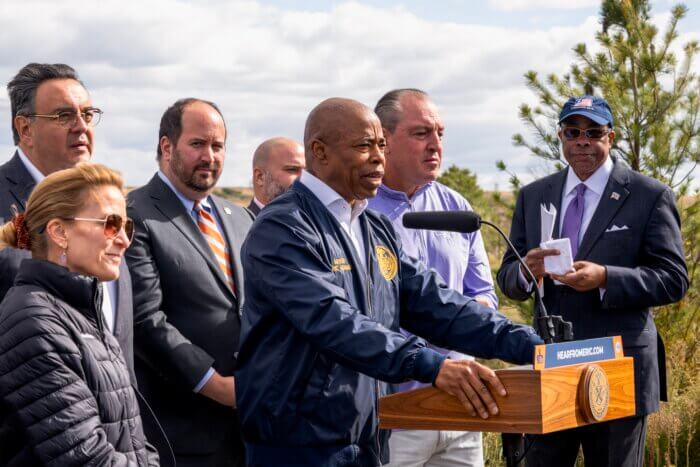
Adams hailed the project as a bi-partisan success story.
“The park shows what we can achieve when we put our minds together and come together is a marvel of human ingenuity and engineering,” Adams said.
Hizzoner also highlighted the city’s tentative agreement with the more than 100 Staten Island Ferry workers, who had not seen a pay raise since 2009. “We said, ‘We got this, we are going to get it done,’ and we got it done,” Adams said. “We are given those Staten Island working class people what they deserve.”
Sue Donoghue, New York City Department of Parks and Recreation commissioner, described the green space as a “truly transformational project for Staten Island,” making it a gem not only for Staten Islanders but all New Yorkers and visitors from around the world.
“Think about what this site represented for so many decades, an unattractive eyesore,” Donoghue said. “You could smell it just driving past.”
Donoghue also believes that the dump’s transformation into a park is a model of how restoring dumping grounds benefits wildlife and the environment in urban areas.
“This is just another example of how New York City and New York City Parks is leading the way,” Donoghue said. “In creating this park, we’ve put an emphasis on sustainability for protecting the environment.”
Council Member Joseph Borelli grew up on Staten Island and said he could see the landfill in “its full glory” from his bedroom window. Borelli admitted he was one of the “naysayers” and didn’t believe the project would get off the ground.
“I didn’t think this day would come where we’re actually standing on Freshkills Park, able to use it, able to have fun. This is going to be a successful park,” Borelli said, whose only point of contention was the lack of a golf course.
Council Member David Carr thanked politicians like Vito Fossella and Staten Island Borough President Guy Molinari for forcing the city to shut down the “environmental debacle” in 2001.
“It’s an absolutely wonderful day. I look forward to continuing to advocate for our open spaces in our parks and seeing the future phases of Fresh Kills come to light,” said Carr, who suggested a zipline across the park’s wetlands.
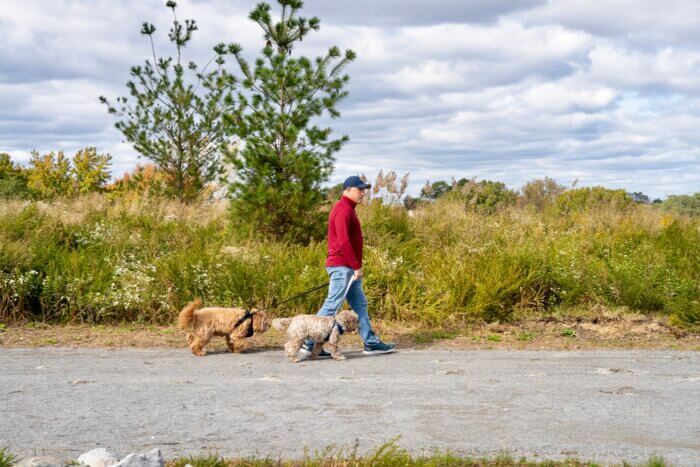
Staten Island Borough President Vito Fossella said the park was a restoration 80 years in the making. As a congress member, he lobbied then-mayor Michael Bloomberg to turn the wasteland into a park. Fossella said New York City’s dumping ground was not only an unattractive nuisance but also a disgrace, calling the park a gift for Staten Islanders.
“It bears repeating because we don’t want it to happen again. While every other landfill in the city closed, there was one on Staten Island, and we were 5% of the population, and we received 100% of the garbage,” Fossella said, describing scenes of seagulls flying over piles of garbage and bulldozers.
Congress Member Nicole Malliotakis also thanked all the politicians who pushed for the closure of Freshkills and turning it into a park.
“As Vito said, it shows when we stick together regardless what level of government, regardless what party affiliation we are, we can get great things done for our fellow neighbors,” Malliotakis said. “So let’s keep it going.”
Many, including Assembly Member Michael Reilly, recalled that the smell of the landfill was “horrendous.”
“I can remember it like it was yesterday, and a girl that I was dating, her family lived around the corner, and it really stunk,” Reilly said. “But to think, 31 years since I first moved to Staten Island in 1992, the change that has happened, the beautification I would have never thought would have happened, and thanks to those that came before us, we have that. It’s just an ‘awe’ moment.”



